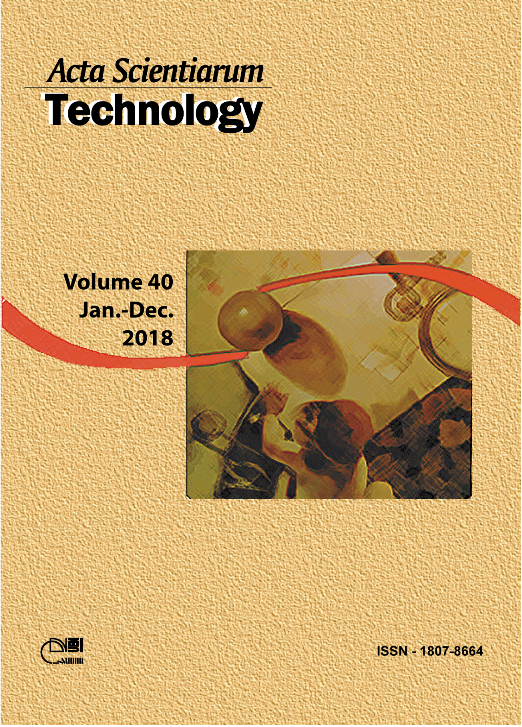<b>Evaluation of the effects of the hydraulic gradient variation on the permeability of a compacted soil
DOI:
https://doi.org/10.4025/actascitechnol.v40i1.35052Keywords:
column percolation, environmental geotechnics, permeability coefficient.Abstract
The present study evaluated the influence of the hydraulic gradient on soil conductivity changes using data from permeability tests performed in a column percolation test system, in order to represent geoenvironmental engineering applications. A mature residual soil from gneiss, pedologically classified as Red-Yellow Latosol, with 67% of clay, 10% of silt, 23% of sand, 82% of liquid limit and 46% of plastic limit was used in the study. Soil specimens were compacted at the optimum compaction parameters determined at the Standard Proctor effort, i.e., wopt =31.37% and gdmax =13.54 kN m-3. After compaction, it was determined the permeability of specimens under the hydraulic gradients of 15, 66, 85 and 140. The results obtained support that: (i) at the 5% level, there is statistical significant variation in the permeability coefficient according to the hydraulic gradient used in the tests; (ii) from a geotechnical perspective, there is a slight tendency of increasing the permeability coefficient when increasing the hydraulic gradient, but of no significance for geotechnical practical applications.
Â
Downloads
Downloads
Additional Files
Published
How to Cite
Issue
Section
License
DECLARATION OF ORIGINALITY AND COPYRIGHTS
I Declare that current article is original and has not been submitted for publication, in part or in whole, to any other national or international journal.
The copyrights belong exclusively to the authors. Published content is licensed under Creative Commons Attribution 4.0 (CC BY 4.0) guidelines, which allows sharing (copy and distribution of the material in any medium or format) and adaptation (remix, transform, and build upon the material) for any purpose, even commercially, under the terms of attribution.
Read this link for further information on how to use CC BY 4.0 properly.















8.png)




